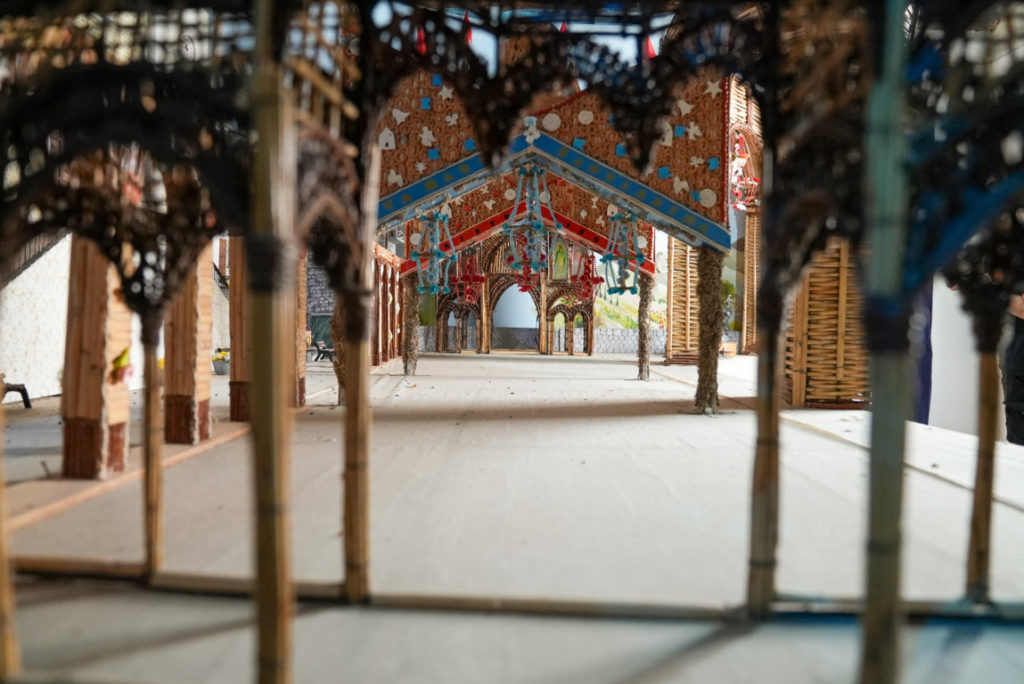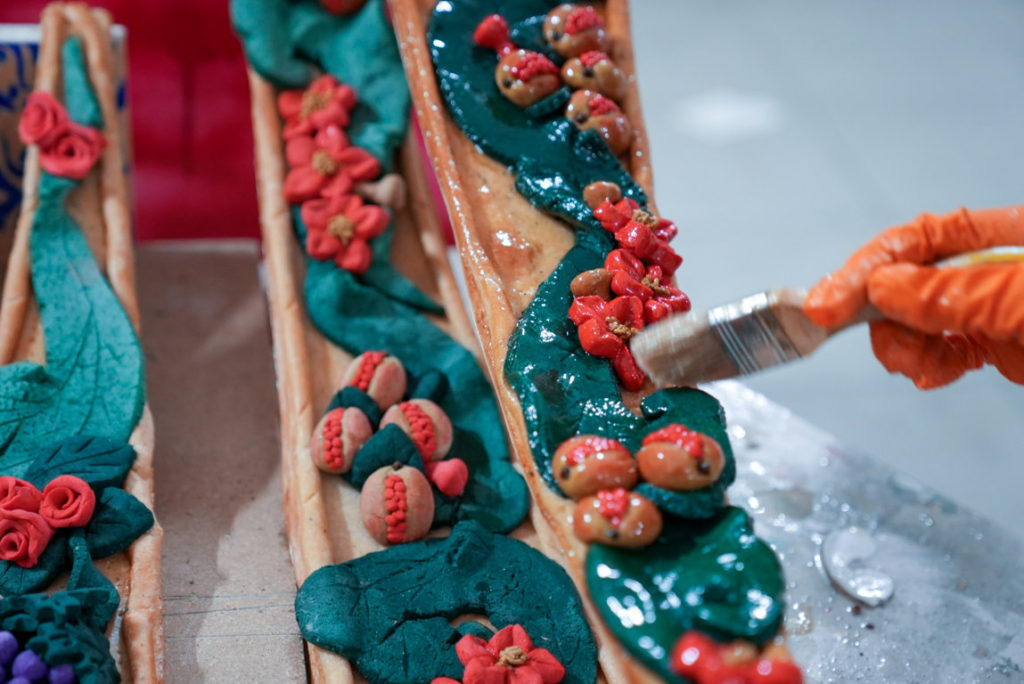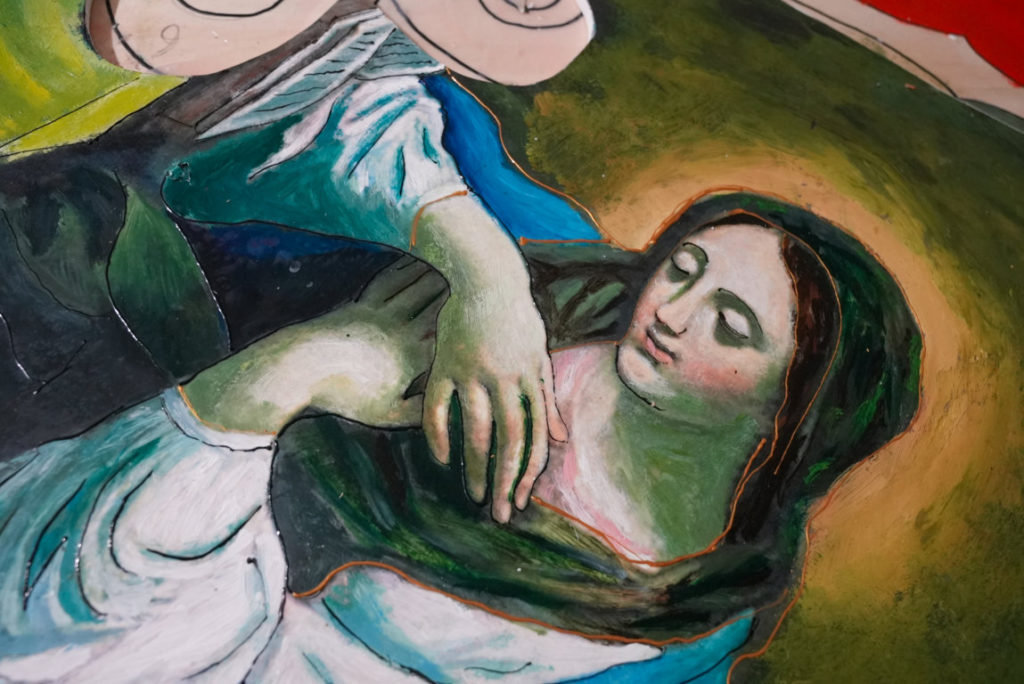The tradition of the Easter Arches in San Biagio Platani
The tradition of the Easter Arches (“Archi di Pasqua”) dates back to the second half of the 17th century, shortly after the founding of the town. These are ephemeral artistic structures made with perishable materials such as reeds, laurel, legumes, and willow branches. The scenic design of the event draws inspiration from the triumphal arch, which in basilican architecture marked the threshold between the central nave and the transept where the sacred rite took place. The triumphal arches of San Biagio Platani define the sacred space where the ritual of life’s triumph over death unfolds—the victory of Christ, the revelation of the “Mystery” in the Resurrection.
This ceremonial moment takes place annually along the town’s main street, divided in two by the confraternities, during springtime, when nature itself—bursting with scents and colours in the Sicani Valley—celebrates its own rebirth. The highlight is the encounter between the Risen Christ and the Heavenly Mother, which takes place under the central arches of the two confraternities, Madunnara and Signurara, at noon on Easter Sunday. It is an overwhelming and captivating outburst of joy, where the cries of invocation to the Risen Christ and the Blessed Mother merge into one voice.
The art of building the Arches and the accompanying stage designs is born from the hands of an entire town, split between the two confraternities of Signurara and Madunnara, arranged along the street, divided equally between them. This artistry is intertwined with religious devotion, nourished by bread and grain, and takes shape in spectacular constructions enriched by a variety of artistic creations—conceived for the occasion and capable of enchanting thousands of visitors each year.
Though mounted during Holy Week and completed at dawn on Easter Day, the work begins much earlier—right after the Christmas season—and involves the whole community, regardless of age, gender, or social status. Everything starts in the town’s warehouses, where artisans, children, youth, and elders gather. These spaces become places of social cohesion: everyone contributes with their skills in a generational relay that passes down techniques, symbols, and a strong sense of belonging. There is an ongoing rivalry between the two confraternities to find new construction methods, artistic decorations, and staging ideas. Over the years, this has led to distinctive styles between the two groups. The divide is no longer visible only in the split of the main street, but also in the specific artistic details crafted by what have become two true schools of art. The Signurara are distinguished by their use of red willow in weaving and the creation of artistic mosaics using natural elements such as legumes, chickpeas, dates, and various seeds. The Madunnara, by contrast, use yellow willow and is known for its painted panels and wooden decorations enriched with flowers made from tissue and crepe paper, which are hardened through immersion in melted wax. This combination of creativity and knowledge-sharing makes the workshops veritable crucibles where sacred art is born.
The Easter Arches are not just a religious event—they are the result of a months-long collective artistic effort and a friendly rivalry between the two confraternities to outdo each other in creativity and execution. The evolution of the event over the past 45 years has elevated its status far beyond the local level. The Easter Arches of San Biagio Platani are now widely recognized as an intangible cultural heritage and a symbol of Sicilian identity.
This element has been included in the Register of Intangible Heritage of local interest of the Municipality of San Biagio Platani, as part of Intervention 4 “Activation of the Observatory on the Intangible Cultural Heritage of the Territory through the application of the REIL methodology – Register of Intangible Heritage of Local Interest”, within the “RiGenerAzioni Archi di Piano 2030” project, funded by the NRRP (National Recovery and Resilience Plan), Mission: Digitalisation, innovation, competitiveness, culture and tourism, Component: Tourism and culture 4.0, Investment 2.1 “Attractiveness of villages.” CUP: J29I22000110006.




